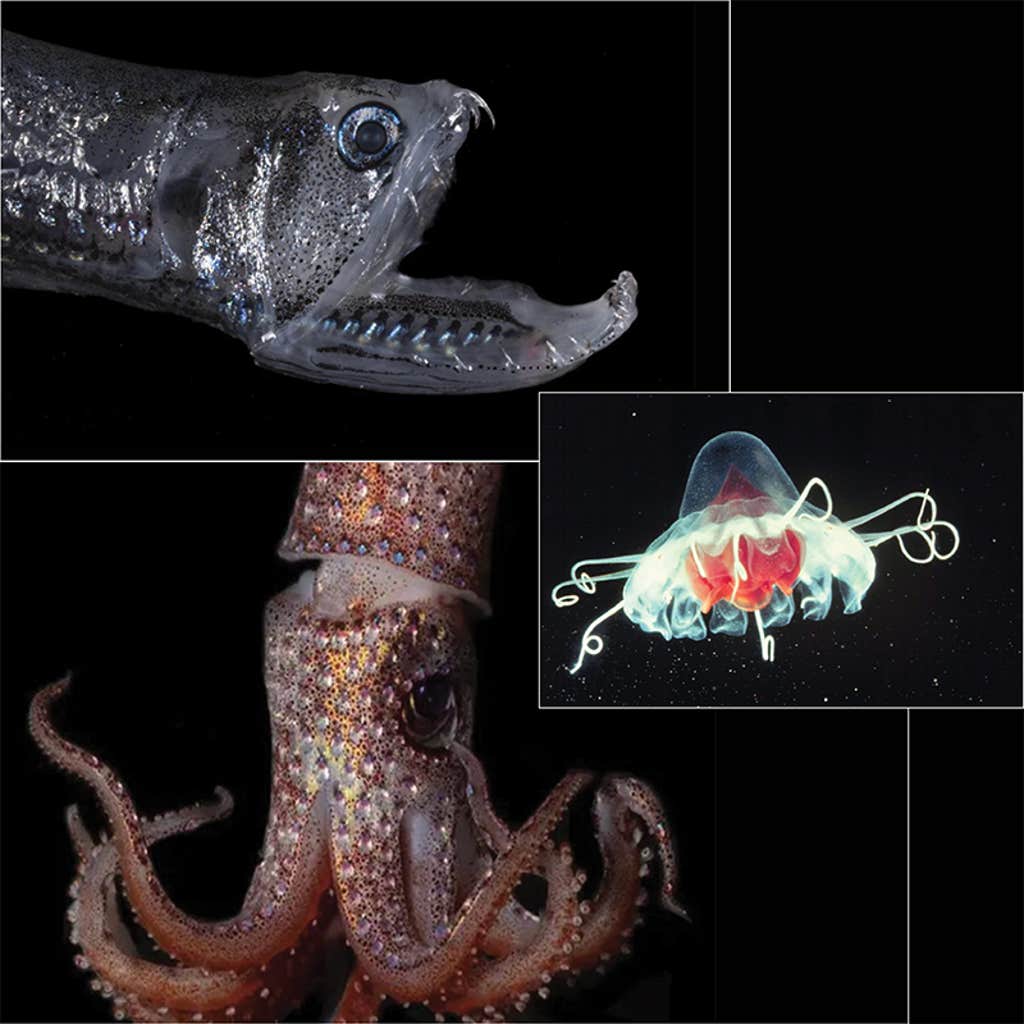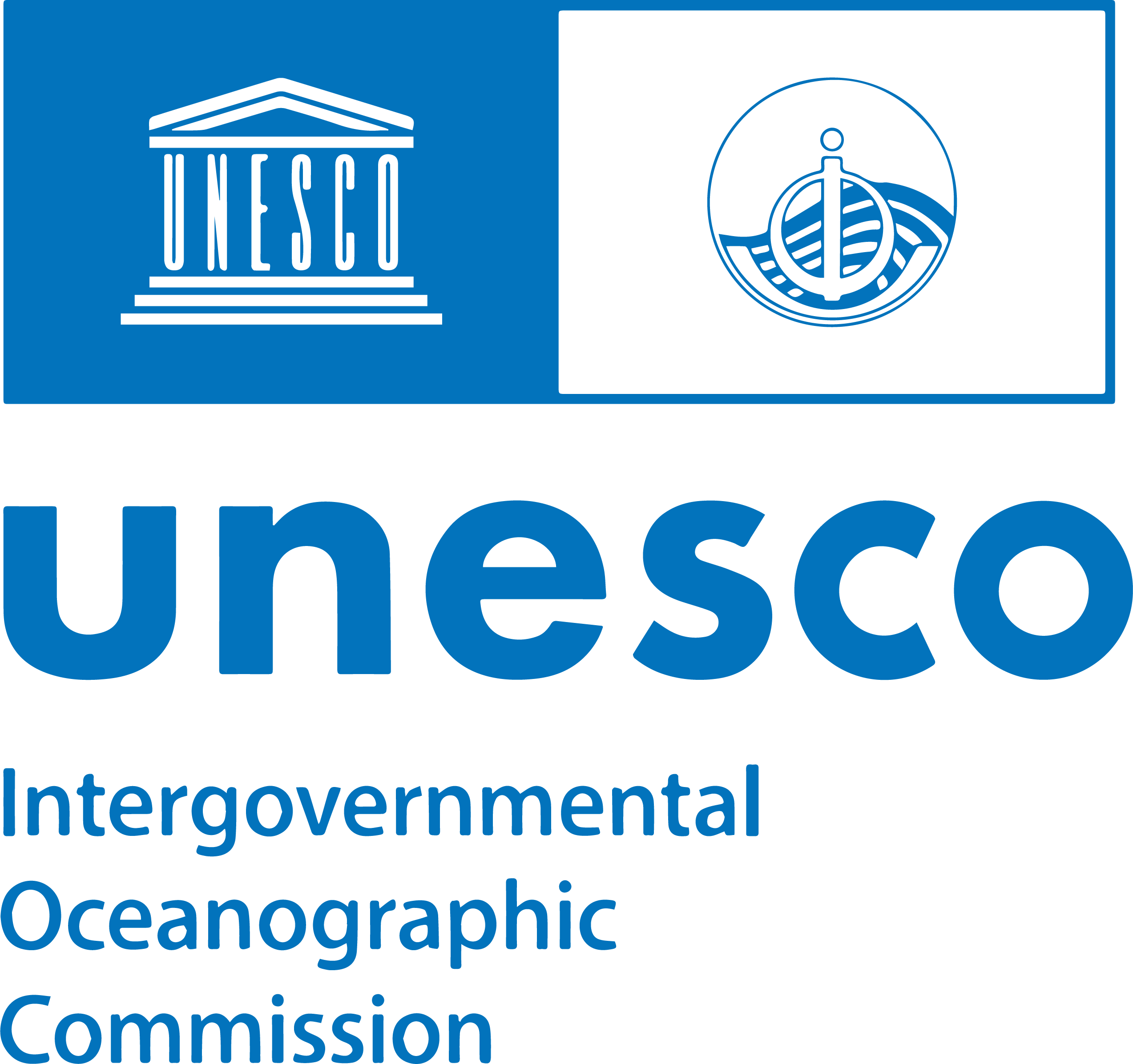When you go to the “deep end” of the ocean, I’d always been told, don’t fight the undertow or it’ll drag you down. You have to let it sweep you until you can float past it. That’s where you’ll find the best places to snorkel.
This was the Caribbean, where I grew up, and where I first ventured past where the waves begin to form, to that place we call the deep end. Outfitted with my bright blue flippers and a snorkel, I listened to the whisper and rhythm of everything around me. Through my foggy goggles, I could spot colorful parrot fish and schools of yellow French grunt, especially if I swam closer to the reefs.
Once I came across a creature so unexpected, so alien-like; the kind of thing I imagined you’d find only in the deep. It had to be a squid. Two of them, swaying gently underneath the surface, about 8 inches long, with perfectly round, almost cartoonishly googly eyes on either side of their narrow heads. They reminded me of other monocular animals, of birds that turn sideways to get a good look at you. I stretched out my hand. They didn’t reach for it—but they didn’t swim away, either. One or two minutes must have passed like this as the three of us levitated, frozen in this gesture, my breath deepening, the cold water currents rippling between us.
I came across a creature so unexpected, so alien-like; the kind of thing I imagined you’d find only in the deep.
I wasn’t sure why the squid were that close to the surface. Most squid, I would learn, live in the ocean column known as the mesopelagic, the “Twilight Zone.” It starts roughly 600 feet below the surface and goes down into darker waters, about 3,300 feet deep. In other words, it starts where there is a trace of light and extends to a depth where there is none.
The Twilight Zone is a world of wonders. It’s home to barbeled dragonfish, a gnarly looking creature whose teeth are embedded with nanocrystals. There’s the helmet jellyfish, which has no brain and no eyes but a sensory bulb that can tell it when it’s a good time to retreat down into the darkness. There’s the strawberry squid, a bright pink wonder with mismatched eyes; the small eye pointed down to look for beams of bioluminescence in the dark, the big eye facing above to identify the shadows of other animals closer to the surface. And then there’s the 46-feet long, 1,000-pound colossal squid that led Norwegian sailors to dream up the man-killing kraken that has inspired art, literature, and mythology. Fables documented by the 18th-century Norwegian missionary Hans Poulsen Egede insisted that if fishermen were ever so unlucky to catch a kraken or be caught by its tentacles, they’d be taken to the Twilight Zone, the ocean underworld that holds the hardest-to-uncover secrets and treasures, never to return.
Centuries on, the Twilight Zone remains as amorphous as it is sprawling and mysterious. Scientists, including those under the umbrella of the United Nations Ocean Decade Program, have only recently begun to uncover the secrets of its topography, ecology, and biogeochemical content, not to mention the organisms that live there. It’s an urgent mission.

The Twilight Zone contains the largest and the least exploited fish stocks on the planet, and is the site of the largest migration on Earth. It also plays a major role in global biogeochemical cycles and the sequestration of carbon dioxide, and its floor is bedazzled by polymetallic encrusted rocks that have been forming over millions of years in some of the slowest geological processes that we know of. Just as cutting-edge research technology and submersibles are beginning to allow scientists to explore the sea beyond the reach of light, it’s the potential of these untapped treasures that is putting the Twilight Zone at risk of becoming a modern-day Wild West—the site of the next gold rush.
Some of the Twilight Zone’s riches may show up in parts of the Indian, South Atlantic, and Pacific oceans. But the rush is now on to a site 2.5 miles deep into the Pacific Ocean seafloor, the Clarion-Clipperton Zone, which lies between Hawaii and Mexico. Manganese nodules resembling dark gray amoebas as big as 4 inches wide were found there in 1875 by the crew of the British Naval ship-turned-sailing-laboratory HMS Challenger, the first oceanographic expedition of its kind, which dredged up samples of creatures from the ocean floor from around the world.
The HMS Challenger brought the samples to the Manchester Museum and London’s Natural History Museum, where they sat unexamined for years, until a team of British scientists decided to try to unpack the different components within the nodules. Manganese is typically found together with iron and has been used as an alloy with aluminum and copper; it is also the main component in battery cathodes, electronics, fertilizers, bricks, textiles, glass. Its uses seem endless. Who could have predicted that a race to supply manganese and other rare earth minerals needed to manufacture batteries for the next generation of electric cars could drive a new crop of researchers with ties to the mining industry out to the high seas?
The prospectors aren’t just mining companies: Banks and some governments are also positioning themselves for future resource extraction. In July 2021, the Central Pacific island country of Nauru announced a desire to begin deep sea mining for polymetallic nodules containing metals like manganese, cobalt, copper, and nickel. This triggered what’s known as a “two-year rule” in international law, a temporary hold on industrial-scale deep-sea mining, giving world scientists and policymakers until July 2023 to figure out what it would mean for the planet. Scientists need to assess what Twilight Zone mining could do to the under-researched organisms that live there, and how it would reverberate across local ecosystems, the wider ocean, and the rest of the planet.
“There are already companies and investors looking at this area as something to invest in, yet there are still many fundamental uncertainties in terms of what the impact [of deep-sea mining] will be,” says Adrian Martin of the United Kingdom’s National Oceanography Centre. Deep-sea mining, Martin says, is likely to generate unprecedented waste and disturb species’ natural cycles.
The Twilight Zone contains the largest and least exploited fish stocks on the planet, and is the site of the largest migration on Earth.
Martin is the principal investigator with the Joint Exploration of the Twilight Zone Ocean Network (JETZON), launched in 2020 as a response to a variety of factors—among them, the impacts of overfishing, climate change, and the looming deep-sea mining. A UN Ocean Decade Program, JETZON brings together Twilight Zone researchers from around the world. By 2030, they hope to gain “a deeper scientific understanding of how it functions, what supports the ecosystem, what are the main drivers, what are the main pressures on the Twilight Zone and how might they change over the coming century,” says Martin. But the two-year rule, which some scholars have described as a nuclear option, means JETZON is racing against time to learn as much as possible about the Twilight Zone before it’s too late for the oceans to maintain their ecological balance and for science to better understand what lies beneath.
Currently, there are 15 JETZON projects involving teams from 12 countries studying changing biodiversity in the Atlantic Ocean, more accurate measurements of fish biomass, and the ways life in the Twilight Zone is governed by the daily cycles of light and dark. Many of the research projects focus on the threats to this widespread ecosystem, which extend beyond deep-sea mining: illegal, unreported, and unregulated fishing; transnational shipping; proposals for CO2 mitigation methods; ocean noise; and, of course, looming over all of it, global climate change.
Traditional ways of researching—and policing—may not be sufficient to manage the threats simply because they are too many and too powerful. The Woods Hole Oceanographic Institution is one of the JETZON teams embarked on studies of the Twilight Zone. In an interview on the Woods Hole website, Heidi Sosik, a senior scientist at the institution, underscores the importance of the research. “As humans, we have a pretty solid track record of overexploiting natural resources, to the point where we cause damage that we never intended to cause,” Sosik says. “Oftentimes, it’s because we just don’t understand how a certain ecosystem works, or how interconnected it is with the rest of the planet.” She adds, “The more we learn, the more we realize that the Twilight Zone provides incredible services to the whole planet, and we want to protect that value so we can be better stewards of the oceans moving forward.”
Martin tells me he didn’t follow a typical trajectory to ocean science: He came to marine systems modeling by way of mathematics first and then cosmology, the study of the universe across time and space. “In an ideal world,” I ask Martin, “how would we as humans, corporations, and governments better engage with the Twilight Zone? What would be the ideal scenario to come out of all these discussions, all this research?” What if science and conservation won?
“I don’t think it’s a battle,” Martin says. He sounds even-keeled and pragmatic, carefully choosing his words. JETZON’s focus is on research, not on politics. But it has the potential of influencing policy making. “If we can get to a situation where the scientists are providing information, which is of direct use to the people managing the resources and making decisions on the policies, and the input from those scientists is being taken seriously in making those decisions, then that’s what we’re striving to achieve,” he says.
Still, the self-imposed deadlines for JETZON’s Twilight Zone research and the deep-sea mining moratoriums seem arbitrary; they are set to expire too soon. What happens after 2023? Or 2030? “I’ll be honest with you,” Martin says. “It would be nice to be able to make some sort of grand challenge that we want to tackle by the end of the decade.” It’s a challenge that can only be met by the cooperation of scientists and conservationists, industry leaders and lawmakers.
In Spanish, the word for “twilight” is crepúsculo—from the Latin crepusculum—the last light of the day. It’s also commonly called the zona claroscura, a place where clarity and darkness crossfade. As scientists bring us clarity about the twilight state of the ocean, darkness remains. I’m not an ocean scientist, a professional conservationist, industry leader, or policymaker. But I am a swimmer. And I have my own message. Swimming in the deep end has taught me, quite simply, to push forward without letting myself get dragged down. ![]()
Lead collage created using images from the Woods Hole Oceanographic Institution































